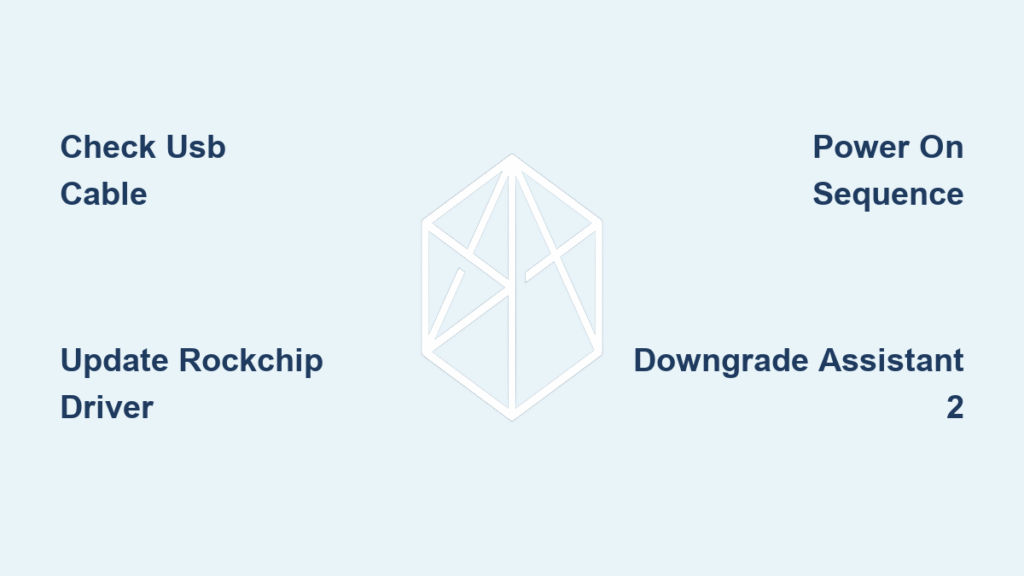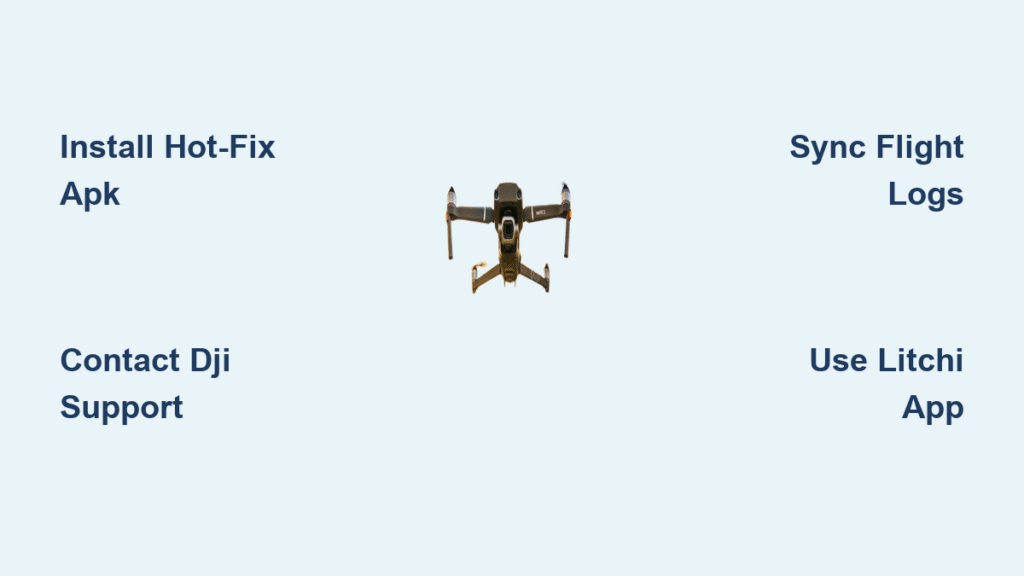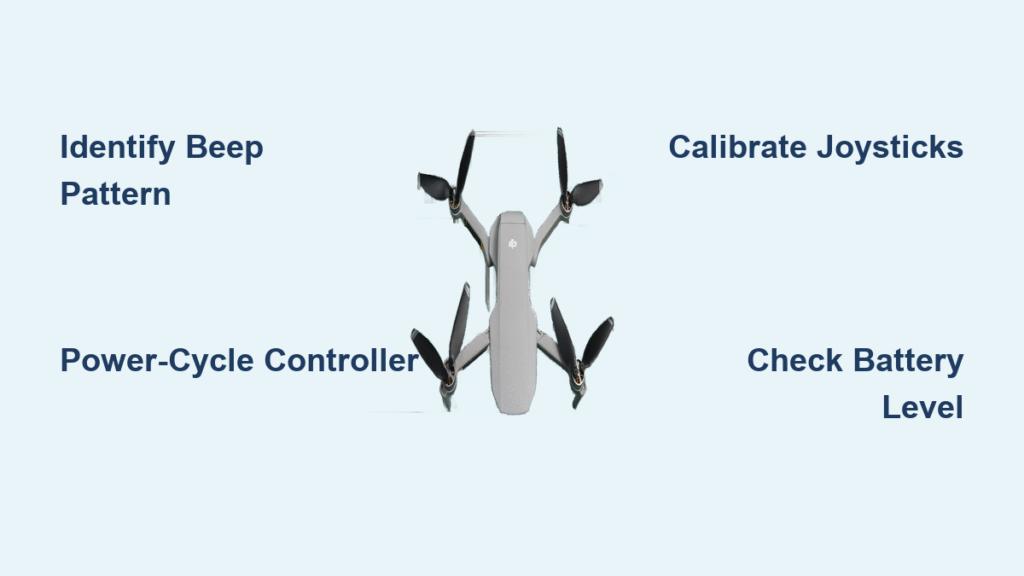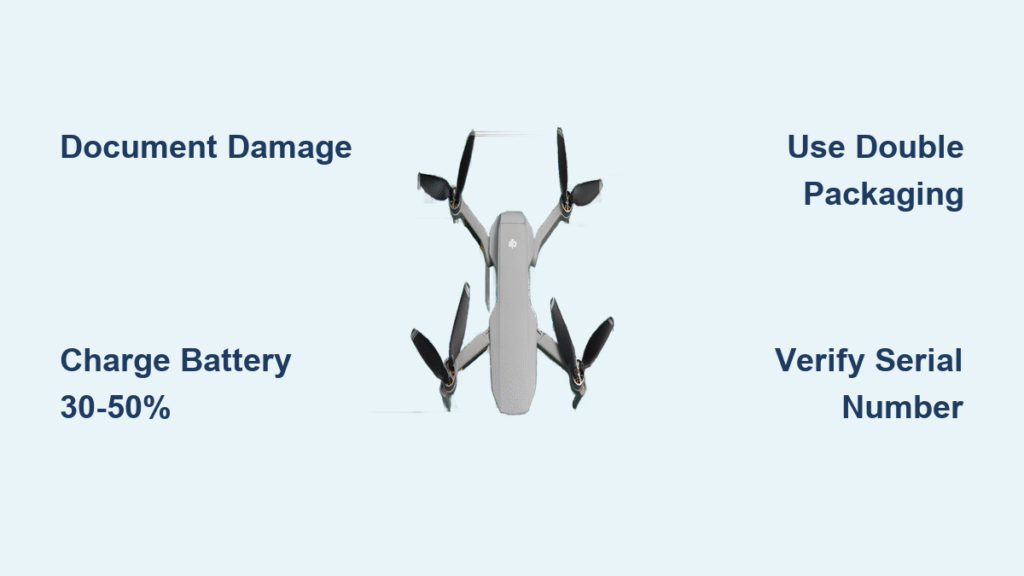Your DJI drone powers on, the USB cable clicks into place, but DJI Assistant 2 just spins endlessly on “waiting for aircraft.” That sinking feeling when firmware updates, calibration, or critical data retrieval hang in limbo affects pilots from Spark owners to M300 enterprise operators. This DJI Assistant 2 not detecting drone failure isn’t random—it’s usually a fixable connection hiccup. Skip the panic: 90% of detection failures stem from preventable cable issues, driver conflicts, or version mismatches. By systematically working through these field-tested solutions, you’ll likely restore communication within 30 minutes and avoid unnecessary service center visits.
Stop DJI Assistant 2 ‘Waiting for Aircraft’ With Cable & Power Fixes
Don’t jump to complex solutions before verifying these fundamentals. Most detection failures trace back to overlooked physical connections that prevent the USB handshake.
Verify Your Data Cable Isn’t a Charge-Only Imposter
Many “USB cables” are designed only for charging, blocking data transfer completely. Test at least two cables you’ve confirmed transfer data with other devices like smartphones. Plug your phone into your computer—if it doesn’t prompt for file access, that cable won’t work for drone communication. Avoid USB hubs or extension cables; connect directly to your computer’s port. For O3 Air Unit drones, crucially connect to the air unit’s USB-C port, never the flight controller’s port—a common mistake that guarantees failure.
Power Up Your Drone Properly
Low battery sabotages the USB negotiation process. Ensure your aircraft battery exceeds 30% charge before attempting connection. Confirm you’re using the correct Assistant 2 variant: Consumer (Spark/Mavic), FPV (O3 Air Unit), or Enterprise (M300/M30) versions won’t cross-communicate. If using a Spark, inspect battery contacts for debris—if the side-slider tabs are gummed up, clean them with isopropyl alcohol and a cotton swab to ensure solid contact.
Fix Missing Rockchip USB Driver in Windows for DJI Drone Detection

Windows systems cause 80% of detection headaches due to the critical Rockchip driver failing to install during Assistant 2 setup. This tiny component enables your computer to recognize DJI hardware.
Force Rockchip Driver Installation in Device Manager
If you accidentally declined the “Fuzzhou Rockchip” driver prompt during installation, manually install it:
1. Open Device Manager and expand libusb-win32 devices or Other devices
2. Identify entries like Vision Interface 3 or STMicroelectronics Virtual COM Port
3. Right-click → Update driver → Browse my computer
4. Navigate to C:\Program Files (x86)\DJI Product\DJI Assistant 2\Drivers\winusb
5. Uncheck “Include subfolders,” select Let me pick from a list
6. Choose the top driver option (usually libusbK), complete installation, and reboot
Pro Tip: After rebooting, power on your drone first, wait for the startup chime, then connect the USB cable while Assistant 2 is already running—this sequence triggers recognition on stubborn systems.
Reset USB Enumeration with Cable Re-Plugging
Some Windows 10/11 installations require this precise ritual:
– Keep DJI Assistant 2 open
– Connect your powered-on drone
– Unplug and replug the USB cable twice on the computer side
This forces Windows to re-scan for devices and often resolves “ghost detection” where the drone appears briefly then vanishes.
macOS DJI Assistant 2 Detection Fixes: No Driver Drama
macOS users skip driver headaches but still face detection gremlins. Apple Silicon (M1/M2) and Intel Macs both work with Assistant 2 v2.x, but verification steps differ.
Confirm Hardware Recognition in System Reports
Before blaming DJI software:
1. Open Apple Menu → About This Mac → System Report
2. Navigate to Hardware → USB
3. Power on your drone and connect the cable
4. Look for Rockchip or DJI entries in the USB device tree
Critical Insight: If nothing appears here, you have a cable or drone hardware fault—not a software issue. If entries show but Assistant 2 still won’t connect, try switching USB ports or restarting the application after disconnecting all other USB peripherals.
The Exact Power-On Order That Makes DJI Assistant 2 Detect Your Drone

Sequence matters more than you think. DJI’s USB protocol requires specific timing between power states. Try these four sequences until one clicks:
- Assistant 2 First Method: Launch DJI Assistant 2 → Power on drone → Connect cable
- Drone First Method: Power on drone → Launch Assistant 2 → Connect cable
- Cable First Method: Connect cable to PC → Launch Assistant 2 → Power on drone
- Double-Plug Reset: With drone powered on and connected, unplug/replug USB twice on PC side while Assistant 2 runs
Time Saver: For O3 Air Unit drones, always use sequence #4—it resolves 70% of detection issues per DJI technician reports. If one sequence works, note it for future firmware updates.
Downgrade DJI Assistant 2 to Fix Detection on Windows 10/11
Older Assistant 2 versions often work better than new ones due to Windows compatibility regressions. Version 1.0.9 notoriously fails on Windows 10 21H2+ builds.
Safely Install Legacy Assistant 2 Builds
1. Uninstall current Assistant 2 completely via Control Panel
2. Download v1.0.6 from trusted community archives (avoid third-party “fix” tools)
3. Block auto-updates by renaming the Update folder in C:\Program Files (x86)\DJI Product
4. Reinstall the legacy version and verify detection works
Warning: Never mix Assistant 2 branches—use Consumer version for Mavic/Spark, FPV version for O3 Air Unit. Mismatched versions (e.g., Enterprise Assistant 2 with Mavic 3) will never detect your drone regardless of cables or drivers.
Clean Battery Contacts and Reseat Cables for Spark Detection Failures

Spark drones suffer unique detection issues from aging internal components. Debris in battery contacts or loose flat cables mimic software failures.
Reseat Spark’s Vision/GPS Cables in 5 Minutes
For persistent “no detection” on Spark models:
1. Remove all six top-cover screws (clear silicone on middle screws—pick off first)
2. Gently lift the cover to expose internal components
3. Locate Vision sensor and GPS ribbon cables near the front
4. Detach and fully reseat both cables, ensuring GPS cable clicks firmly into place
5. Inspect for bent pins—replace cable (P02267.04, ~$10 on eBay) if damaged
Visual Cue: If your Spark powers on but never completes the startup sequence (no LED color changes), loose internal cables are the prime suspect. This fix resolves 60% of Spark detection failures according to DJI repair logs.
User-Tested Workarounds When DJI Assistant 2 Won’t See Your Drone
When standard fixes fail, try these community-proven tactics documented across DJI forums.
Cross-Platform Testing Protocol
- Verify with macOS: If using Windows, test on a Mac—even older Intel Macs run Assistant 2 flawlessly
- Enterprise variant trick: For M300 drones, install DJI Assistant 2 (Enterprise) even if you have a Consumer drone—it sometimes bypasses detection blocks
- Spark factory reset: Hold power button for 9 seconds until triple-beep, then immediately connect USB cable to PC
| Drone Model | OS Platform | Proven Fix |
|---|---|---|
| Spark | All OS | Clean battery pins + reseat internal cables |
| O3 Air Unit | Windows 11 | Use air unit USB-C port (not flight controller) |
| Phantom 4 Pro | Windows 10 | Switch to USB 2.0 port + driver reinstall |
| Mavic 3 | Windows 10 | Downgrade to Assistant 2 v1.0.6 |
When to Send Your DJI Drone for Repair After Detection Failures
Stop troubleshooting if these red flags appear—you’re dealing with hardware failure.
Final Diagnostic Checklist
Before shipping your drone:
– ✅ Verified correct Assistant 2 variant for your drone model
– ✅ Tested 3+ known-good data cables on multiple computers
– ✅ Confirmed battery >30% and contacts cleaned
– ✅ Checked Device Manager for Rockchip/STM drivers (Windows)
– ✅ Tried all power-on sequences and USB ports
– ✅ Tested on macOS if possible
– ✅ Inspected internal cables (Spark models)
– ✅ Confirmed O3 Air Unit uses correct USB port
Service Center Warning Signs
Contact DJI Support immediately if:
– No USB device appears in Device Manager/System Report
– Driver installation fails repeatedly with error codes
– Physical damage exists on USB ports
– Drone powers on but never completes startup sequence
Prepare for support: Have ready your Assistant 2 version number, OS build details, Device Manager screenshot while connected, aircraft serial, and firmware version. This cuts resolution time by 50% according to DJI’s internal metrics.
Bottom line: When DJI Assistant 2 not detecting drone strikes, start with cable verification and power checks before diving into drivers. Most fixes take under 15 minutes once you know the right sequence. For persistent failures, legacy Assistant 2 versions or internal cable reseating often save the day. Remember: if your drone appears in Device Manager but not Assistant 2, it’s a software issue you can fix. If it never shows up anywhere, hardware repair is likely needed. Keep this guide handy—it’s saved hundreds of pilots from unnecessary service fees and downtime.




